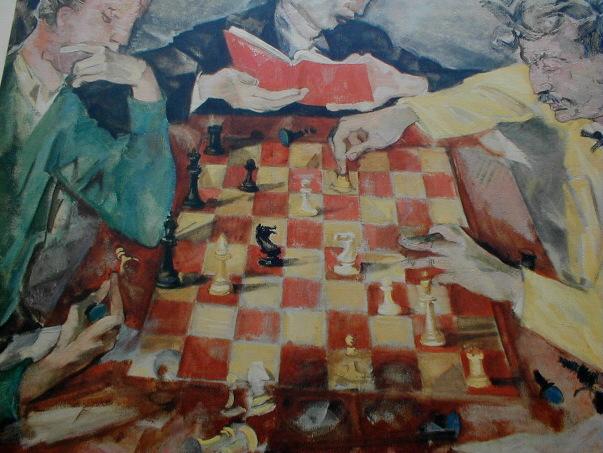Slow Circle
Doing a lot of the same problems for me leads to a form of tactical laziness. I know I have seen the problem and mechanically play some moves. This is a dangerous way to play given that in game situations, I reach similar positions where the tactic does not work due to counter play and defensive captures.
I am doing a slower circle where I blunder check everything and calculate everything fully to quiescence before moving a single piece.
I also hope to develop an observation check list of clues to tactical situations based on positional considerations. ie: When I have 2 bishops and one controls an open diagonal in front of a queen. Check for boden mate/crisscross mates and calculate Queen Sacks to set this up.
Scoring around 90% on level 20 which needs improvement so I am going back and do a very slow level 10 and then a slow level 20.
I have started to play the Scandinavian Defense due to poor experiences against good Ruy players like Keystor . Playing 3 ...Qd6 as in this collection . I know about 3 moves deep into the opening and am just at this point trying to put my pieces on good squares. Had a big rating drop on playchess initially but it now appears the bleeding has stopped.
I am doing a slower circle where I blunder check everything and calculate everything fully to quiescence before moving a single piece.
I also hope to develop an observation check list of clues to tactical situations based on positional considerations. ie: When I have 2 bishops and one controls an open diagonal in front of a queen. Check for boden mate/crisscross mates and calculate Queen Sacks to set this up.
Scoring around 90% on level 20 which needs improvement so I am going back and do a very slow level 10 and then a slow level 20.
I have started to play the Scandinavian Defense due to poor experiences against good Ruy players like Keystor . Playing 3 ...Qd6 as in this collection . I know about 3 moves deep into the opening and am just at this point trying to put my pieces on good squares. Had a big rating drop on playchess initially but it now appears the bleeding has stopped.


4 Comments:
At 7:16 AM, Ron said…
Ron said…
Something that I really like about the Qd6 Scandinavian:
In the year and a half or so that I've been playing it, I have not once gotten further than move 6 or 7 in the "main" line before my opponent deviates. This tells me that very few people (at my current level at least) know the theory.
The best part is that the large majority of early deviations in this line make it relatively easy for black to equalize or even gain an edge early on.
Ron
At 10:32 AM, Loomis said…
Loomis said…
I really like this post because it makes me think about tactics solving and using it to be a better chess player. I think you're right that memorization and playing out the memorized moves is not optimal.
It makes me think of an analogy to arithmetic. We memorize things like '2+5=7' (we could calculate this everytime, but it is more efficient to just know it). And we use our memorized knowledge to calculate things like: 483 + 127 = 610
It would be futile to memorize additions between 3-digit numbers. Just as it is futile to memorize the solutions to 1000 complex tactical problems.
When we're presented with a complex tactical problem, we calculate its solution based on the small memorized pieces (basic checkmates, forks, pins, etc.). This is probably why there are two suggestions for tactical practice problems, 1) Lots of problems you do very quickly (memorizing the small basics) and 2) Spending a lot time finding all the variations in a complex position (calculation practice).
At 11:29 AM, hisbestfriend said…
hisbestfriend said…
This is precisely the move that Andrew Martin talks about in the DVD "The Scandinavian the easy way".
We are thinking about that as the black answer to e4 just to get out of others preperation and comfort zone.
The nice thing about the Andrew Martin disks is that he talks about the central themes of the openings, and what you should be doing, and what the opponent is likely to do.
He likes this, simply because it is sound and simple.
At 5:10 AM, Blue Devil Knight said…
Blue Devil Knight said…
As white I am usually happy when black blays the Scandy, as it's like getting a 'develop your pieces for free' card.
I have yet to run into Qd6 as white, but since I just started studying this opening as white last night, I noticed that Chessops for white, explained said its getting more popular.
I agree that it is dangerous to get into a pure 'pattern recognition' (PR) mode and just make moves. Sometimes, when I am in the 100+ mode problems a day, I am in that PR mode, and there is no way around it. That is the whole point of the Circles, to be able to operate in that mode well with tactics.
But, as tak says, it is very important to not try to play in PR mode! For some this means adding a thinking process (MDLM did this), for others it might mean practicing on analysis/calculation. I do both of these, importantly in the context of slow games.
Post a Comment
<< Home